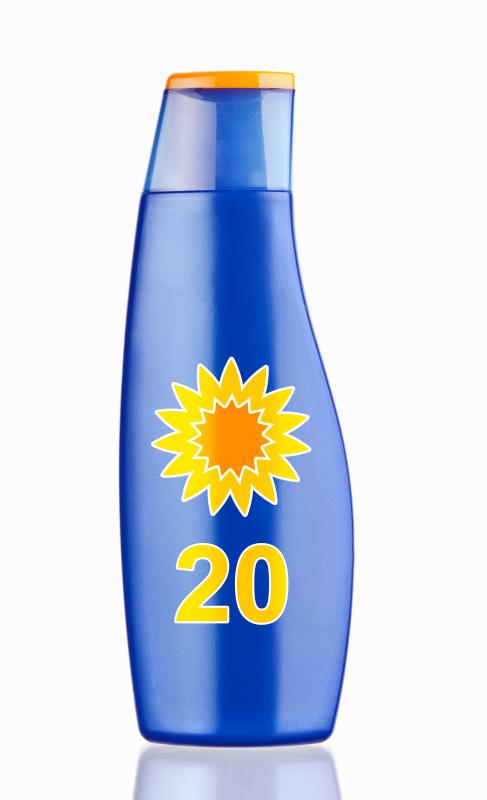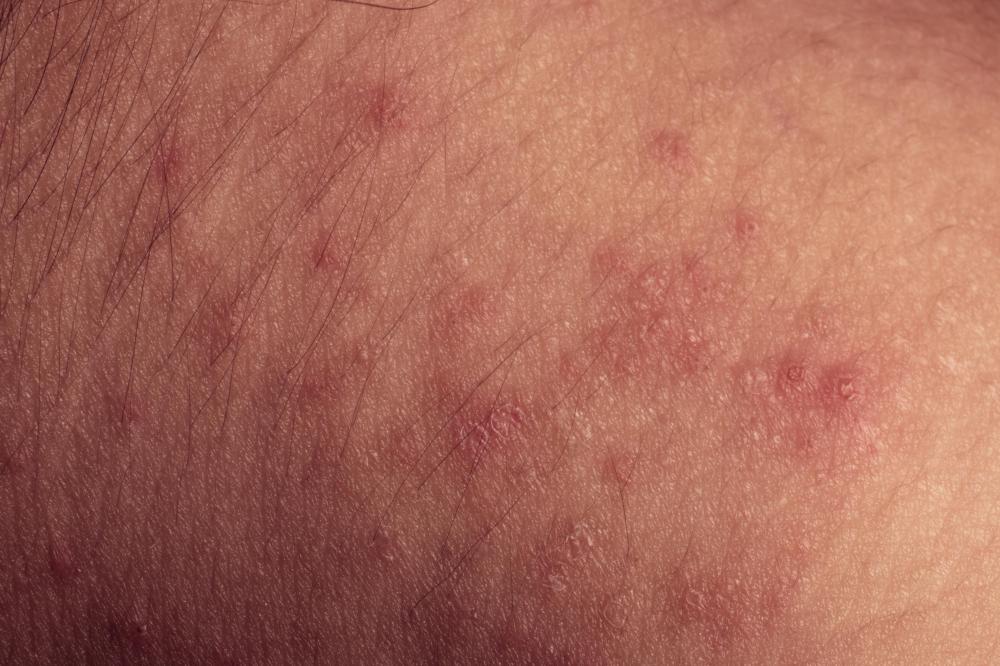At WiseGEEK, we're committed to delivering accurate, trustworthy information. Our expert-authored content is rigorously fact-checked and sourced from credible authorities. Discover how we uphold the highest standards in providing you with reliable knowledge.
What Are the Signs of an Allergic Reaction to Sunscreen?
Experts estimate that less than one percent of the world’s population is allergic to an active ingredient in sunscreen, but redness, blisters, and itching are common indicators. The reaction is usually a rash of various severity caused by a type of contact dermatitis. Allergic contact dermatitis occurs when a person is allergic to sunscreen, while contact photoallergy occurs when a person is allergic to the combination of sunscreen and sun exposure. A dermatologist or allergist can help determine what a person is actually allergic to, and what type of sunscreen he or she should use instead.
Allergic contact dermatitis is a common allergic reaction to sunscreen. It occurs when a substance touches a person’s skin who is allergic or very sensitive to the ingredients. The signs of this reaction sometimes appear as late as two days after exposure to the sunscreen. Redness, itching, and minor swelling of the skin might be experienced. In addition, some people experience blisters or oozing, open sores, depending on how bad the allergic reaction is.

Another kind of contact dermatitis that occurs as a sign of an allergic reaction to sunscreen is called contact photoallergy. When someone experiences allergic contact dermatitis, he or she gets a rash wherever the sunscreen was applied. On the other hand, with contact photoallergy, the rash only appears where the sunscreen was applied and was exposed to the sun. Contact photoallergy occurs because of a reaction between the sun’s rays and the chemicals in sunscreen. These two signs of an allergic reaction to sunscreen can be difficult to tell apart.

Since sunscreen is an important part of maintaining healthy skin and preventing skin cancer, someone who is allergic to an ingredident in sunscreen needs to find an alternate product to use. Certain doctors can perform tests to figure out exactly what a person is allergic to in sunscreen. After that, he or she can look for sunscreens that do not have the ingredient and therefore should not cause an allergic reaction.

Sunscreens are not all the same, much like cosmetics, shampoos and other skin or beauty products that sometimes cause an allergic reaction. In fact, there are more than a dozen active ingredients that can be used, in addition to many fragrances and preservatives. Active ingredients, fragrance oils, and preservatives can all be the cause of an allergic reaction to sunscreen. Therefore, in most cases, a person can just look for a different kind of sunscreen and wear it without a problem.
AS FEATURED ON:
AS FEATURED ON:















Discussion Comments
If you're allergic fine, but don't make the rest of the kids go without it because they are not allergic to it. Do you really think this is the first time the mother put sunscreen on her kid? Really.
Has anyone experienced blistering sores from sunscreen? Can a allergy cause blisters like this?
I started using a new sunscreen yesterday and woke up with several blisters and sores on my arm. I can't figure out what caused it, but I'm suspecting the sunscreen.
I always thought that allergies cause itching and swelling. Can a sunscreen allergy cause blisters?
I'm allergic to sunscreens that have chemicals in them. I get a red, itchy rash on my skin within fifteen minutes of applying the sunscreen. Even after washing it off, it takes a whole day for the redness and irritation to go away.
I was able to find a natural sunscreen that only contains zinc and natural oils and extracts in it for protection and no chemicals. I don't have any reactions to this sunscreen so I know that I'm allergic to only the chemicals.
Post your comments